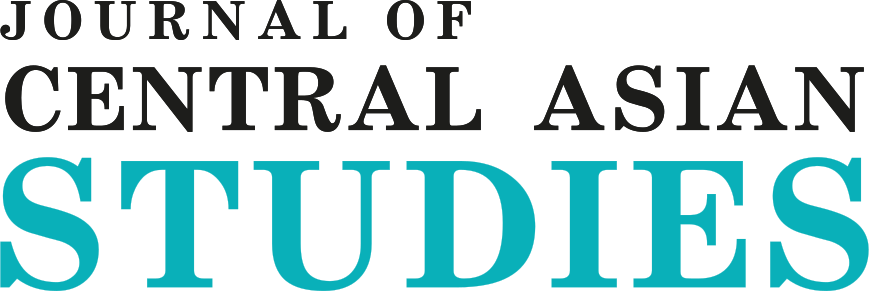Problems of Regional Identity in Central Asia: EU Experience
DOI:
https://doi.org/10.52536/2788-5909.2022-2.03Keywords:
Central Asia, European Union, intergration, Regional identityAbstract
In the era of globalization, the most diverse processes of modern life are observed through the prism of ‘identity crisis’ and ‘search for identity’. In recent years, the discussion of identity problems has become the main direction of global studies. Some criticize this process and consider that the globalization requires a global, cosmopolitan culture with blurring national identities. Others believe that global interdependence leads to a new level of regional cooperation by giving opportunities and perspectives. In this article the question arose as whether Central Asia will develop regional identity absorbing suitable from European experience or postpone this idea.
References
Buluktayev Y. (2012). Problemy regional'noi identichnosti v Tsentral'noiAzii (Chast'1) [Regional Identity Issues in Central Asia (Part 1)]. Sauran - Sauran. 2012. URL: http://cc-sauran.kz/rubriki/politika/14-problemy-regionalnoy-identichnosti-vcentralnoy-azii-chast-1.html
Anderson, B. (2006) Imagined Communities: Reflections on the Origin and Spread of Nationalism, 3rd rev. ed., 235 p.
Kumar, D. (2010) Gellnerian Theory of Nation and Nationalism: A Critical Appraisal. Sociological Bulletin, 59(3), pp. 392–406.
Paasi, A. (2009). The resurgence of the ‘Region’ and ‘Regional Identity’: Theoretical perspectives and empirical observations on regional dynamics in Europe. Review of International Studies, 35(S1), 121-146. doi:10.1017/S0260210509008456
Laruelle, M. (2013) Foreign policy and affiliation with Central Asia. Pro et Contra - Pro et Contra. pp. 6-20.
Somuncuoglu, A. (2017) Identichnost' i napisanie istorii v integratsii Tsentral'noi Azii [Identity and History Writing in Central Asian Integration]. Tsentralnaya Aziya: Pyat Gosudarstv Ili Odin Region? - Central Asia: five states or one region? [Electronic resource] URL: https://www.caa-network.org/archives/author/anar-somuncuoglu (access date 25.08.2021).
Fact Sheets on the European Union: Language Policy. [Electronic resource]
URL:http://www.europarl.europa.eu/factsheets/en/sheet/142/language-policy (access date 25.12.2021).
Giovanni, R. (2015) United in Diversity Multilingualism in the European Union and India. 2014-2015. [Electronic resource] URL: https://tesi.luiss.it/14872/1/properzimaria-chiara-tesi-2015.pdf] (access date 25.12.2021).
Adamo, S. & Kjær, A. (2015) Linguistic Diversity and European Democracy. Cambridge University Press. pp.82–102.
European Commission Official. [Electronic resource] URL: http://ec.europa.eu/archives/commission_2004-2009/index_en.html (access date 25.12.2021).
Redinger, D. & Millar McColl, R. (2010) Language Planning and Policy on Linguistic Boundaries: the case of Luxembourgish. Marginal Dialects: Scotland, Ireland and Beyond. pp.90-106.
Languages for democracy and social cohesion. Diversity, equity and quality (2014) [Electronic resource] URL: https://rm.coe.int/languages-for-democracy-and-socialcohesion-diversity-equity-and-quali/168069e7bd (access date 25.12.2021).
Aubakirova, A. & Krengauz, I. (2020) Ekonomicheskie aspekty regional'noi identichnosti postsovetskoi Tsentral'noi Azii [Economic aspects of the regional identity of post-Soviet Central Asia]. Obzor ekonomiki Tsentral'noi Azii - Central Asian Economic Review. 3(132). pp. 8-19.
Downloads
Published
Issue
Section
License
Copyright (c) 2022 Aspandiyar S., Nurdavletova S.

This work is licensed under a Creative Commons Attribution 4.0 International License.










 Open content is licensed under the CC-BY
Open content is licensed under the CC-BY 